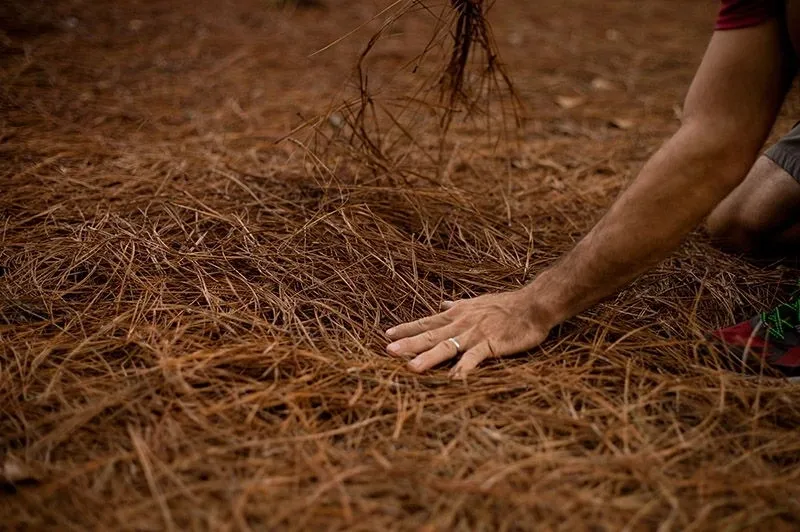New Orleans mulch maintenance is the difference between healthy beds and plants that struggle all year.

Why “more mulch” is not the answer
Piling new mulch on old layers creates wet, sour beds that choke roots. In our humidity, mulch breaks down fast. Old mulch compresses, blocks air, and traps moisture at the crown. That is how you get fungus, gnats, and plants that never look right.
New Orleans mulch maintenance
- Humidity and fast decomposition: Old layers rot into a mat.
- Termites and pests: Wood piles near foundations invite trouble.
- Clay soil and drainage: Thick mulch stops water from moving down and out.
- Fungal disease: Constant moisture around stems triggers rot.
The hidden dangers of old mulch
- Nitrogen tie-up: Decomposing mulch steals nutrients from your plants.
- Anaerobic pockets: Sour mulch forms when air cannot reach the soil. Roots suffocate.
- Pest harboring: Thick, wet layers invite insects and fungus.
- Root rot: Wet crowns lead to decline and plant loss.
Featured Video: Reasons to Remove Old Mulch
Professional management that saves plants
- Remove old mulch regularly: Do not bury last year’s layer. Clear it to the soil.
- Set proper depth: Aim for about two to three inches, not five.
- Choose smart materials: Pine straw for acid lovers, hardwood blends for general beds, and non-dyed options near foundations.
- Time your refresh: Early spring and early fall fit our weather and keep beds clean.
- Integrate with irrigation: Adjust drip and sprays so mulch does not trap water at stems.
- See our mulch and bed services
- Pair with irrigation tune-ups
Learn the basics here: Mulch on Wikipedia
Cost analysis you can feel in your beds
Bad mulch practice kills plants and invites fungus. Replacing shrubs, annuals, and soil adds up fast. A professional removal and refresh costs less than a season of plant losses and treatments.
| Problem | DIY Pile-On | Pro Removal + Reset |
| Air flow | Blocked | Restored |
| Water movement | Trapped at crown | Moves to roots |
| Disease pressure | High | Low |
| Plant loss | Likely | Rare |
| Annual cost | Replacements + sprays | Single refresh, healthier beds |
CleanCut’s Maintenance Approach
- Clear old mulch without cutting drip lines.
- Loosen topsoil, add compost where needed.
- Reset irrigation to shorter cycles for beds.
- Install the right mulch at the right depth.
- Edge clean and schedule touch-ups before holidays.
Best practices by microclimate
- Full sun beds: Hardwood with regular checks for drying edges.
- Shade beds: Pine straw or fine blend to avoid soggy crowns.
- Near foundations: Avoid thick dyed mulch. Keep space near the slab.
- Under trees: Lighter layers to protect feeder roots without trapping water.
FAQ
How often should I remove old mulch?
Once a year in our climate. Some beds need a light mid-season touch-up.
Is dyed mulch bad?
Dyes can be fine, but thickness and airflow matter most. We balance look with plant health.
Can it attract termites?
Any wood product can. Keep space near the slab and avoid heavy piles at the foundation.
Will drip lines get damaged during removal?
We expose lines first and hand-clear around emitters.
Takeaway
Healthy New Orleans beds start with the right mulch depth and regular removal of old layers. We clear, reset, and refresh so roots breathe and plants thrive.




